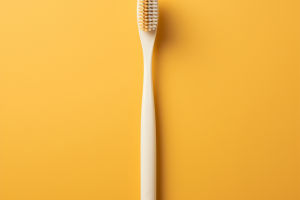Paper Cups: Eco-Friendly?
Lykkers, when considering whether paper cups are more environmentally friendly than other options, it's important to look beyond the surface.
At first glance, paper cups might seem like a green alternative to plastic, but the reality is more complex. Let's dive into the life of a paper cup and see how it stacks up environmentally.
The Journey of a Paper Cup
Materials and Manufacturing
Paper cups are typically made from a combination of wood pulp and a thin plastic lining, usually polyethylene. This plastic layer is necessary to make the cups waterproof, but it also complicates recycling. Producing paper cups requires significant amounts of water and energy, along with logging for wood pulp.
Even though wood is a renewable resource, it can contribute to deforestation and habitat loss if not sourced sustainably. Additionally, the manufacturing process generates greenhouse gases, contributing to climate change.
The Recycling Dilemma
One of the main challenges with paper cups is their recyclability. The plastic lining must be separated from the paper, which many recycling facilities cannot do efficiently. As a result, a large number of paper cups end up in landfills, where they can take years to decompose.
While some regions are developing better recycling methods, the infrastructure is not yet widespread enough to handle the volume of disposable cups produced.
Comparing Paper and Plastic Cups
Environmental Impact
Plastic cups are made from non-renewable petroleum resources and are not biodegradable, leading to long-term pollution if not properly disposed of. However, they are often easier to recycle than paper cups, as they don't have a lining that needs separation. The production of plastic cups generally requires less energy than paper cups, which might be surprising but is an important factor in their overall environmental impact.
Biodegradability and Waste
While paper cups are technically biodegradable, the presence of the plastic lining complicates this process. In a landfill, where conditions are not optimal for biodegradation, they break down very slowly. Plastic cups, on the other hand, do not biodegrade at all, but their recyclability can mitigate some of their environmental footprint if proper recycling facilities are available and used.
The Role of Compostable Cups
A Greener Alternative?
Some paper cups are made with plant-based, compostable linings instead of polyethylene, allowing them to break down more easily in commercial composting facilities. These cups present a more eco-friendly option, but they require proper disposal infrastructure to ensure they don't end up in landfills.
Challenges in Composting
Even compostable cups can pose challenges, as not all areas have access to commercial composting facilities. Consumers need to be aware of the proper disposal methods and ensure that these cups are sent to facilities that can process them, or else they risk ending up in the same landfills as traditional paper cups.
What Can Consumers Do?
Opt for Reusables
The most environmentally friendly option is to use reusable cups. By cutting down on single-use items, you reduce the demand for disposable cups and minimize waste. Bringing your own cup to coffee shops and other venues not only reduces waste but can often save you money, as many places offer discounts for using your own cup.
Choose Wisely and Dispose Responsibly
If you must use disposable cups, look for those labeled as compostable and make sure they're disposed of properly. Check if your local area has facilities that can process these items. If not, consider advocating for better recycling and composting infrastructure in your community.
The Bigger Picture
While paper cups might seem like the greener choice at first glance, their environmental impact is more complicated. Improving recycling and composting infrastructure, coupled with increased consumer awareness, can help mitigate some of these issues.
Ultimately, the best way to reduce environmental impact is to minimize reliance on single-use items and embrace reusable alternatives whenever possible.


